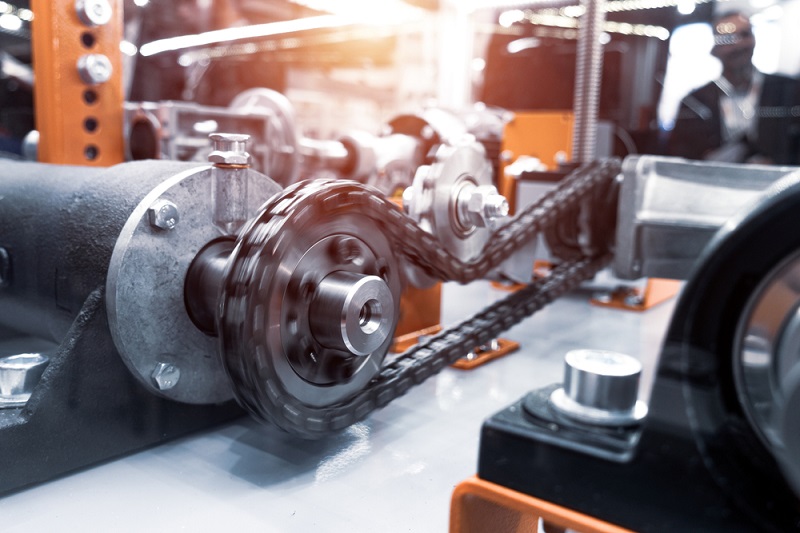A roller chain sprocket is any wheel with teeth that mesh with a chain, though it can also use with a track or other perforated material. Unlike gears, a roller chain sprocket does not mesh directly with other sprockets. The sprockets used in bicycle chains are perhaps the most well-known roller chain sprockets. However, numerous types of machinery, such as automobiles, motorcycles, and tracked systems, use roller chain sprockets.
 |
| Roller Chain Sprocket |
Different Types of Roller Chain Sprockets
- Arms: When big sprocket diameters are required, this type of sprocket is employed. The employment of arms reduces weight and thus inertia and expense.
- Split body: The sprocket body is easier to assemble and detach from around a shaft because it is segmented.
- Plated bodies: They are common on smaller circumference sprockets and give a stronger sprocket construction.
- Fabricated cuts: These have flame or induction hardened components and are flame cut.
- Flanged: The chain's plates rest on the sprocket, allocating some load from the chain's pins, thanks to a short extension on the sprocket rim. Because of the longer chain lifespan, these are commonly referred to as "chain-saver sprockets."
Advantages of Using A Roller Chain Sprocket
- The hubs of our roller chain sprockets are made of high-quality metal. It gives their design strength and durability.
- Glass-reinforced nylon is used to make the body of our roller chain sprockets. Glass-reinforced nylon has several material advantages that contribute to our sprockets 'overall longevity. Nylon is rust-resistant as well as self-lubricating. Nylon is lightweight and also strong.
- Aluminum and nylon work together to create an exceptionally sturdy design and provide consumers with long service life.
Type of Roller Chain Sprockets- Points To Note
The hubs on different types of sprockets are different. A hub is an extra thickness around a sprocket's central plate that does not include the teeth. There are numerous types of sprockets, including:
- Chain of roller: The most common form of the sprocket is a roller chain sprocket. They drive roller chains with pins connecting them. These chains create the spaces into which the teeth of the sprocket fit to transfer movement energy. The most common application is in transmission equipment.
- Double-pitch vs. Single-Pitch: Single-pitch sprockets have separated teeth to allow the roller pins of the chain to fall into each tooth. The pitch is positioned in the double pitch sprockets to fall into every gap. These are employed in conveyor systems with specific product placing requirements.
- Sprockets for a smart tooth: Wear indicator pins on one or more sprocket teeth where indicator sprockets show that the sprocket is wearing down.
- Drum-Drum sprockets are huge, thick sprockets that increase surface area to lessen contact pressure. The teeth, plate, and hub are significantly wider to reduce wear. These sprockets are commonly used in heavy-duty and industrial applications.
- Steel-spilled-many sprockets require slackening the chain, installing the sprocket, and then tightening the chain again. Steel–split sprockets, on the other hand, have two distinct parts that are split down the center and joined back together, making them easier to integrate into an existing system.
- IDLER-A long chain in a system may grow to slack around non-adjustable shafts or long-chain routes around implements. By properly spreading the weight along the chain, these idler sprockets can assist eliminate chain whipping.
- Bushed-In these systems, additional supports, such as anchor bolts, ensure that the flange adheres to the sprocket. Bushes are commonly seen in industrial systems that move large loads.
.jpg) |
| Roller Chain Sprocket |
Conclusion
So, this was all you needed to know about a roller chain sprocket. The aforementioned points make such roller chains the most efficient and cost-effective roller chain sprockets available.